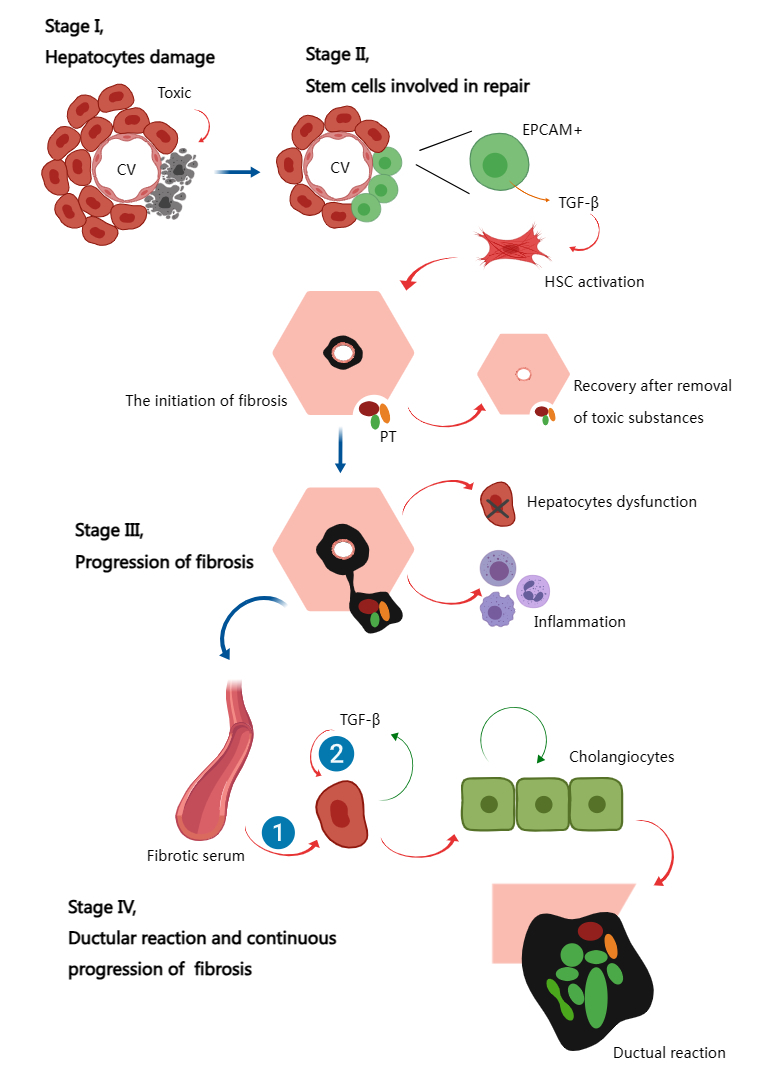
Ye Xie, MD, PhD, is a Postdoctoral Researcher at The First Hospital of Lanzhou University, Gansu province. My research program is centered on chronic liver diseases, with a focus on uncovering the drivers of disease progression and developing mesenchymal stem cell-based therapies for end-stage liver disease, driven to bridge scientific discovery to clinical solutions.
Sequential induction based on liver fibrosis serum and TGF-β2 promotes transdifferentiation of hepatocytes into cholangiocytes
Mengchao Yan2, Ye Xie2, Jia Yao2, Xun Li1,2.
1General Surgery, The first hospital of Lanzhou University, Lanzhou, People's Republic of China; 2Key Laboratory of Biotherapy and Regenerative Medicine of Gansu Province, The first hospital of Lanzhou University, Lanzhou, People's Republic of China
Ductular reaction (DR), characterized by increased bile duct cell numbers and structural changes, constitutes a key feature of liver fibrosis. Hepatocyte transdifferentiation in response to injury is recognized as a fundamental mechanism of DR, supported by animal models. However, specific factors driving this process within fibrotic microenvironments remain unclear.
Using pathological serum from CCl₄-induced fibrotic rats combined with gradient TGF-β1 treatment in BRL-3A hepatocytes, we demonstrate:
Sequence-dependent induction: Preconditioning with 5% liver fibrosis serum (fs, 24h) followed by TGF-β1 (5ng/mL, 24h) significantly upregulated cholangiocyte marker CK19 (3.2-fold increase, P<0.001) while suppressing hepatocyte marker ALB (Figure 1D-I). Individual treatments (fs or TGF-β1 alone) or reversed sequences (TGF-β1 before fs) failed to induce transdifferentiation (Figure 1A-C, J-M).

Mechanistic basis: fs exerts a "pre-positioning role" to overcome hepatocyte plasticity barriers, while TGF-β1 drives dedifferentiation (↑EpCAM/SOX9) and phenotypic conversion .
Integrated pathological model: We propose a 4-stage fibrosis progression model (Figure 2):

Stage I: Central vein hepatocyte damage → Stage II: Fibrosis initiation (HSC activation/collagen deposition) → Stage III: Uncontrolled inflammation/collagen feedback → Stage IV: Microenvironment deterioration enabling TGF-β1-mediated transdifferentiation and DR formation.
The sequential use of liver fibrosis serum and TGF-β1 in vitro promotes the transformation of hepatocytes to cholangiocyte phenotype, which is a model that contains two natural factors to simulate DR related to hepatocytes transformation. The transformation model emphasizes the critical pre-positioning effect of liver fibrosis serum and the promot ing transformation effect of TGF-β1. In addition, we propose a 4-stage model to describe the relationship between the development of liver fibrosis and DR based on the clue of transformation model, which provides a reasonable reference for understanding liver fibrosis.
[1] Hepatocyte Plasticity
[2] Ductular Reaction